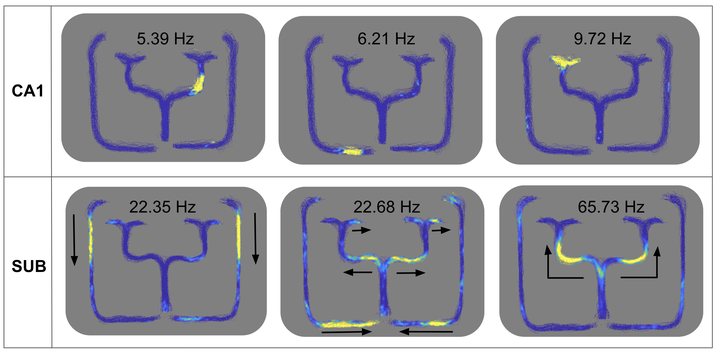
Abstract
Differential Spatial Representations in Hippocampal CA1 and Subiculum Emerge in Evolved Spiking Neural Networks. Paper published in the 2021 International Joint Conference on Neural Networks (IJCNN) Proceedings.
In rodent navigational studies, spatial responses have been identified in both the hippocampal subregion CA1 and the subiculum (SUB), but these two brain regions appear to encode spatial features differently. Place fields of SUB place cells are larger and less specific than CA1. Additionally, SUB neurons exhibit stronger directional modulation for heading and axes of travel. Based on neural and behavioral data recorded as rats perform a navigational task on a “triple-T” maze, we present a spiking neural network modeling framework to replicate response properties observed in the CA1 and SUB. The parameters of Spike Timing Dependent Plasticity and homeostatic scaling (STDP-H) were evolved such that the response of the two different SNNs resembled recordings from CA1 and SUB when rats traversed the triple-T maze. Our results suggest that positional input may be more influential in forming CA1 place cells, while the SUB appears to integrate both allocentric positional information and self-motion cues to encode “kinds of places”. Furthermore, our results predict that the different spatial responses in these regions may be due in part to different STDP-H learning parameters. The framework presented here could be used as an automated parameter tuning system for replicating responses in other brain regions.